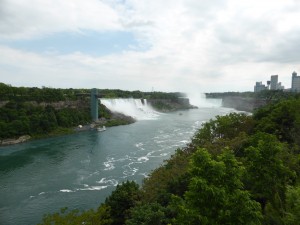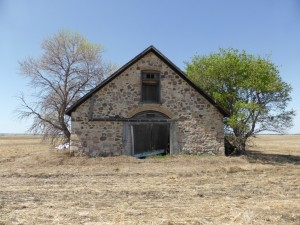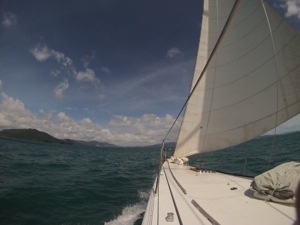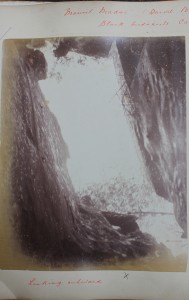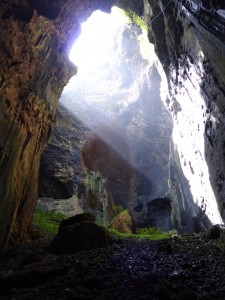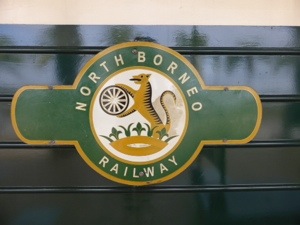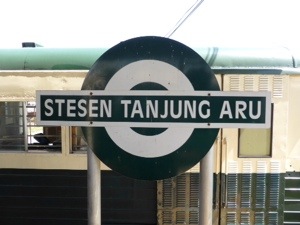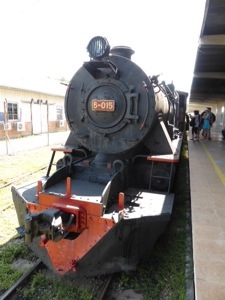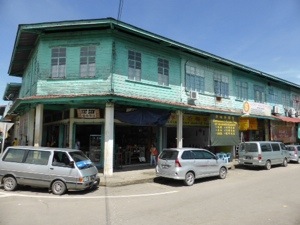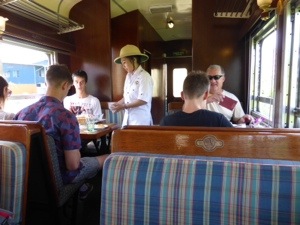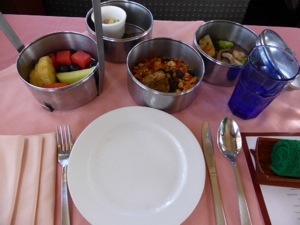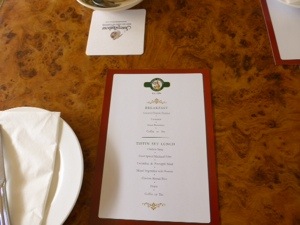Emerging from two days of relative peace and tranquility on the train from Saskatoon to Toronto, I am rested and rejuvenated. My priority now being to see Niagara Falls. A few days in Toronto has brought wonderful memories of earlier times in my trip, the markets and area of Chinatown among others. It is also the ideal stop to travel to the falls from.
Once again I am joined by Annie (Brassey) and her journals providing guidance. Having left the ‘Sunbeam’ in Australia I have been travelling solo up until this point, joined again by Annie and her ‘Cruise on the Eothen’ (1872). It’s nice to have some company again.
Arriving at Niagara it was, as I had been warned, a veritable theme park, a concrete mess ‘dedicated’ to the waterfalls and yet brilliantly managing to almost totally obscure them in the process. In fact, if it hadn’t been for Annie, I may very well have taken the same opinion given to me in Toronto when a surprised receptionist looked horrified and said “three days?! that’s far too long”. This was supported by an equally alarmed fellow passenger on the bus from Toronto, herself going to St Catherine’s for the weekend to visit family, who just looked a little disappointed and rather perplexed and spent much of the trip trying to come up with imaginative and alternative excursions for me to take.
Alas, Niagara Falls was a much anticipated highlight of my trip and with Annie as my guide I could not fail to be impressed. She surely was, waxing lyrical, and at length. She also spent about three days there.
I had also splashed out on a room to myself, about thirty minutes walk from the falls at the hostel. I intended to make the most of this. As soon as I arrived I ventured out for a view of the falls. A walk along the river and first sight comes after about twenty minutes, through the Rainbow bridge that connects Canada with the US, a steam of water can be seen as it crashes into the river below.
Walking a little further on and the Horseshoe Falls come into view at about the same time it hits you just how disappointing the bits on land are. I held my faith, ignoring everything to the right of me and continued along the river to get the best views of the waterfalls. I remembered that Annie had taken a trip behind the falls and so duly followed suit. It was incredible, to imagine the short distance from my earlier viewpoint and I was actually a part of the falls. As much as you can be without being in a barrel and risking life and limb (for which there is a whole museum dedicated to those who have). Not surprisingly it is the sound of the water, all two million litres of it, every second, as it plummets over the edge, which is most demanding of attention, but there is also an ever so slight vibration throughout the whole of the tunnel which is thrilling if a little unsettling. There are two ‘viewpoints’ of neat squares cut out to stand behind the water, about 10 or 12 feet and from where you can see the blanket of white water and the illusion that it is dancing in many ways as the light plays tricks. It looks metres deep, almost like a solid mass, and impossible to see through. You can then stand outside, at the edge of the falls, looking upwards, and be struck by just how far away you need to be from the water and still get soaked. I came away a little disappointed however, this was not as I remember Annie’s account, although I wasn’t expecting to have to strip and dress in oilskins as she had.
Having discovered that the ‘Maid of the Mist’ only runs from the American side, and that the equivalent boat ‘The Hornblower’ does exactly the same thing from Canada, I decided I needed to go to America.
Feeling a little disloyal (Canada does have the best views though), I set out the next day with passport in hand. It may not have been the same bridge Annie crossed but it was, surprisingly a good deal cheaper. She was charged one and a half dollars to cross the suspension bridge. I paid 50 cents (and then a $6 entry fee into the US). It was surprisingly straight forward and America welcomed me.
The ‘Maid of the Mist’ was much more than I anticipated, having been watching it from the land for several hours the day before. Actually sailing up to the falls, along the falls, around the falls and back again genuinely gives you another ‘up close and personal’ perspective of the falls. And, not for the first time, made me worry that I had killed my camera once and for all. The force of the water is palpable when you are so close. Turning from a fairly serene, albeit fast flowing river, at the top of the falls the speed it gathers and amount of water involved as it tips over the precipice is still astonishing.
It was only after this that it fully dawned on me, Annie had visited the falls from this side. Her trip was around Canada but the ‘Maid of the Mist’, Goat Island and the ‘Cave of the Winds’ was accessed from here. ‘The Cave of the Winds’ is no longer a cave unfortunately, that has been closed about a hundred years. But there is now a walkway of the same name that takes you around the bottom of the American Falls. Another close encounter, and one I could take rather more at my leisure, or as much as my waterproofs would allow. Again I feared for my camera. My watch got pretty wet here too but both have thankfully recovered.
The ‘Cave of the Winds’ was also seen in much better sunlight than had been present the day before. And I saw a rainbow. It was beautiful, and an entire half circle, sitting serenely atop the torrent of activity beneath of splashing and crashing, thundering waters descending as fast as gravity will allow it.
Needless to say I was captivated and awestruck. There are places on the boardwalk where you are so close that all you can see is the white froth of the foaming waters above you and heading straight at you. I felt truly immersed and a part of the waterfalls. It is possible to imagine just how punishing a fall from the top would be.

